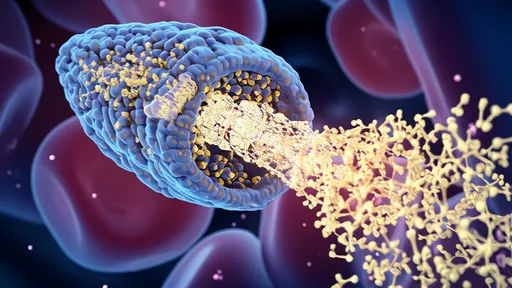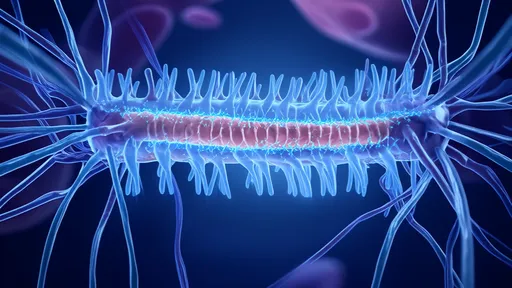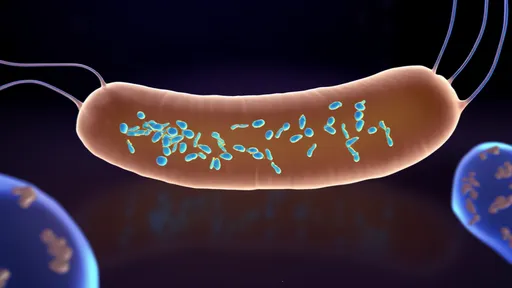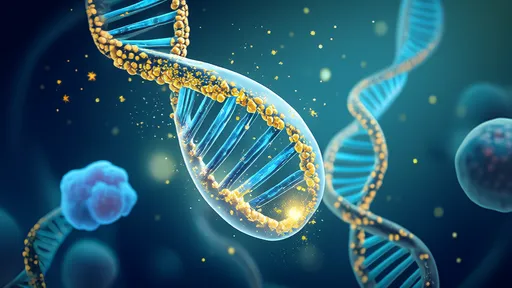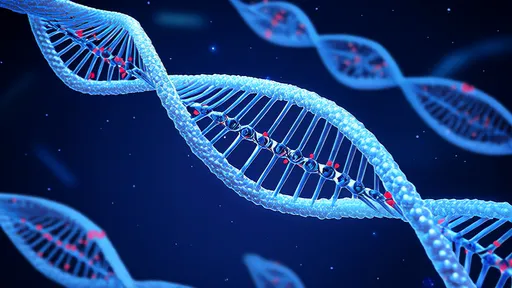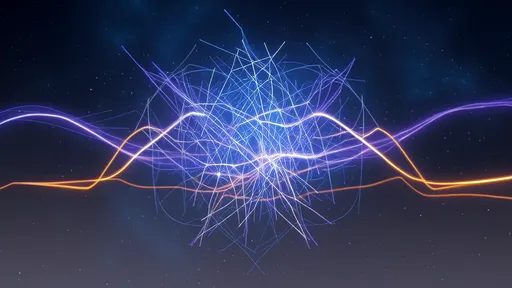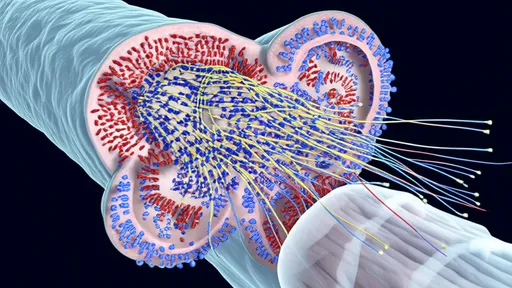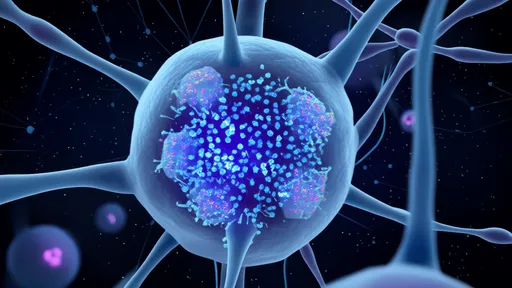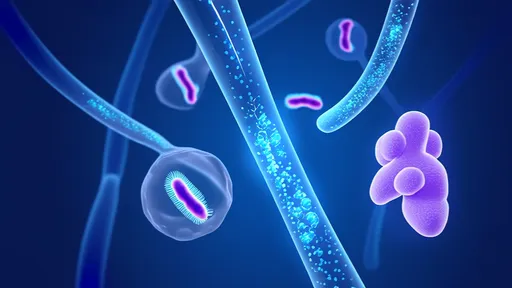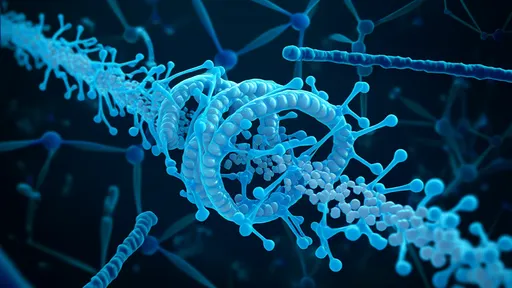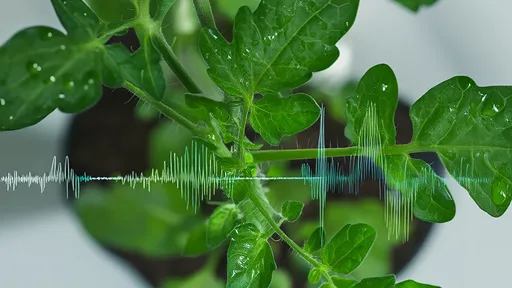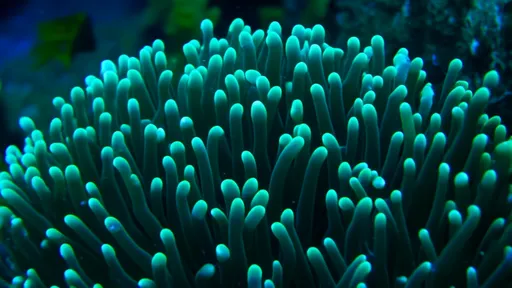For decades, chronic pain has remained one of medicine's most elusive challenges – a complex interplay of biological, psychological, and social factors that often defies conventional treatment. Now, groundbreaking research into the spinal cord's neural "fingerprints" of pain is revolutionizing our understanding of how persistent pain becomes etched into the nervous system. Scientists are mapping specialized neural circuits that appear to encode chronic pain with remarkable specificity, opening new avenues for targeted therapies.
The traditional view of pain as a simple alarm system has given way to a more nuanced understanding of pain processing. At the heart of this paradigm shift is the recognition that chronic pain involves maladaptive changes within the central nervous system itself. Recent studies using advanced imaging and single-cell sequencing techniques have revealed distinct populations of spinal neurons that show unique activation patterns in chronic pain states. These neural signatures persist long after initial tissue healing, suggesting the nervous system develops its own pathological "memory" of pain.
What makes this discovery particularly exciting is the identification of circuit-specific molecular markers that differentiate pain-processing neurons from other spinal cord functions. Researchers have identified subsets of excitatory neurons in the dorsal horn that appear specialized for transmitting and amplifying pain signals. These neurons exhibit characteristic gene expression profiles and connectivity patterns that form identifiable neural "fingerprints" – biological signatures that distinguish pathological pain from normal nociceptive processing.
The implications for treatment are profound. Current pain medications often work broadly across the nervous system, leading to significant side effects and limited efficacy. By contrast, the ability to pinpoint specific pain-processing circuits raises the possibility of developing precisely targeted interventions. Early experimental approaches include designer receptors that can selectively silence hyperactive pain circuits without affecting other neural functions, and gene therapies that aim to reprogram maladaptive neural signaling at its source.
One particularly promising avenue involves optogenetic techniques that allow researchers to activate or inhibit specific neuronal populations with light. In animal models, selectively modulating identified pain circuits has shown remarkable effects – completely abolishing chronic pain behaviors while leaving acute protective pain responses intact. This level of specificity was unimaginable with traditional pharmacological approaches and suggests we may be approaching a new era of precision pain medicine.
However, significant challenges remain before these findings can be translated into clinical applications. The human spinal cord is far more complex than animal models, and individual variations in pain processing add another layer of complexity. Researchers are now working to validate whether the neural fingerprints identified in rodents have direct correlates in human patients. Preliminary studies using advanced neuroimaging techniques suggest similar circuit organizations exist in humans, but much work remains to fully characterize these systems.
Another critical frontier involves understanding how these spinal circuits interact with higher brain centers. Chronic pain doesn't exist in isolation – it involves complex feedback loops between peripheral nerves, the spinal cord, and multiple brain regions. The spinal "fingerprints" appear to be just one component of a distributed pain matrix, though potentially a crucial leverage point for intervention. Some researchers speculate that early modulation of spinal signaling might prevent the cortical reorganization that makes chronic pain so persistent and treatment-resistant.
Ethical considerations also come into play as this research progresses. The ability to selectively manipulate pain circuits raises questions about potential misuse or unintended consequences. Pain, despite its torment, serves important protective functions. Future therapies will need to carefully balance pain relief with preservation of vital warning systems. Additionally, the personal nature of pain experience means that even complete control of spinal circuits might not address all dimensions of suffering in chronic pain conditions.
As research continues, the clinical potential grows clearer. Diagnostic applications may emerge first – using neural activity patterns to objectively identify and subtype chronic pain conditions that currently rely on subjective reports. Therapeutic development will likely take longer, but the field has gained crucial footholds. Pharmaceutical companies are already exploring drugs that target newly identified molecular markers in pain circuits, while neuromodulation devices are being refined to deliver more precise stimulation patterns.
The mapping of pain's neural fingerprints represents more than just another incremental advance. It provides a foundational framework for understanding chronic pain at a circuit level – a prerequisite for developing truly mechanism-based treatments. For the millions living with persistent pain, these discoveries offer hope that future therapies might finally provide relief by addressing pain where it becomes chronic: in the very wiring of the nervous system itself.
For decades, the blood-brain barrier (BBB) has stood as a formidable gatekeeper, selectively shielding the brain from harmful substances while frustrating efforts to deliver life-saving therapeutics. This biological fortress, while essential for protecting our most vital organ, has rendered many promising treatments for neurological disorders ineffective. Now, a groundbreaking approach combining protein engineering and artificial intelligence is cracking the code to safe BBB penetration, potentially revolutionizing treatment for Alzheimer's, Parkinson's, and brain cancers.
In a groundbreaking development that could revolutionize the treatment of spinal cord injuries, researchers have successfully engineered hydrogel-based optical fibers capable of mimicking neural pathways. These "neural optical fibers" represent a fusion of advanced materials science and neurobiology, offering new hope for patients with previously untreatable damage to their central nervous system.
In a groundbreaking discovery that could revolutionize our approach to plastic waste, scientists have identified a surprising ally in the fight against polyethylene pollution: the humble wax worm. More specifically, the bacteria residing in the gut of these caterpillar-like creatures have demonstrated an extraordinary ability to break down one of the world's most stubborn plastics. This finding opens new avenues for tackling the global plastic crisis through biological means.
In a groundbreaking development that challenges our understanding of aging, scientists have demonstrated the potential to reverse cellular aging through a technique called transient reprogramming. This approach temporarily rewinds the epigenetic "clock" of cells without erasing their identity, opening new possibilities for regenerative medicine and age-related disease treatment.
In a groundbreaking leap for precision medicine, researchers have unveiled a light-controlled CRISPR delivery system using DNA-origami "nanodrones" – a fusion of nanotechnology and gene editing that promises unprecedented control over therapeutic targeting. This innovation, emerging from a collaboration between bioengineers and geneticists, reimagines drug delivery by combining the programmability of DNA nanostructures with the spatial precision of optogenetics.
In a groundbreaking study that could reshape our understanding of consciousness, neuroscientists have identified the thalamic reticular nucleus (TRN) as a potential "rhythmic switch" governing wakefulness through gamma wave modulation. This almond-shaped inhibitory structure, often described as the brain's gatekeeper, appears to orchestrate states of awareness by tuning neural oscillations like a conductor leading a symphony of consciousness.
For decades, chronic pain has remained one of medicine's most elusive challenges – a complex interplay of biological, psychological, and social factors that often defies conventional treatment. Now, groundbreaking research into the spinal cord's neural "fingerprints" of pain is revolutionizing our understanding of how persistent pain becomes etched into the nervous system. Scientists are mapping specialized neural circuits that appear to encode chronic pain with remarkable specificity, opening new avenues for targeted therapies.
In a groundbreaking discovery that reshapes our understanding of brain metabolism, researchers have identified glial cells as the unsung architects of neuronal energy distribution. The study reveals how these long-overlooked support cells orchestrate the precise mitochondrial allocation to neurons, challenging the neuron-centric dogma of neuroscience. This paradigm shift underscores glial cells' role as metabolic conductors in the symphony of brain function.
Scientists have uncovered a startling new pathway by which gut microbes communicate with the brain at lightning speed. Dubbed the "10-second gut-brain superhighway," this discovery centers on the vagus nerve's ability to transmit microbial signals faster than previously thought possible. The findings could revolutionize our understanding of conditions ranging from depression to irritable bowel syndrome.
In a groundbreaking discovery that bridges molecular biology and neuroscience, researchers have uncovered how the CPEB protein acts as a "molecular glue" to solidify long-term memories through an elegant phase transition mechanism. This finding not only revolutionizes our understanding of memory persistence but also reveals nature's ingenious solution to maintaining information at the molecular level.
In a groundbreaking discovery that blurs the line between botany and acoustics, researchers have uncovered evidence of tomatoes employing ultrasonic warfare against herbivorous insects. The study, published in Nature Plants, reveals how tomato plants emit high-frequency sounds when under attack - not as passive victims, but as active participants in their own defense.
In the dense rainforests of Central and South America, leafcutter ants have perfected an architectural marvel that puts human climate control systems to shame. These tiny engineers construct elaborate underground nests spanning hundreds of square feet, maintaining near-perfect temperature and humidity levels year-round – without using a single watt of electricity. As architects and engineers grapple with the urgent need to reduce building emissions, these insect-built structures offer profound lessons in passive climate regulation.
The depths of the ocean hold secrets that continue to astonish scientists, and among the most enigmatic phenomena is the "whale fall"—the carcass of a deceased whale sinking to the seabed. These massive organic deposits create transient ecosystems, supporting diverse marine life for decades. But beyond the visible scavengers and bone-eating worms, a hidden microbial world thrives, and within it, something extraordinary has been discovered: colossal bacteriophages, viruses that prey on bacteria, with genomes so large they defy conventional understanding.
In a groundbreaking discovery that could revolutionize coral reef monitoring, scientists have identified a natural early warning system for coral bleaching events. Certain coral species exhibit vivid fluorescent patterns when under thermal stress, acting as biological "sentry lights" that signal the onset of bleaching before visible damage occurs. This phenomenon, observed in reef-building corals across the Indo-Pacific, represents nature's own climate change alert system.
In a groundbreaking development for ecological research and climate science, researchers have harnessed advanced LiDAR technology to map the photosynthetic efficiency of trees across vast forested areas. Dubbed the "carbon pulse" of forests, this innovative approach provides unprecedented insights into how trees absorb and process carbon dioxide at an ecosystem scale. The implications for understanding carbon sequestration, forest health monitoring, and climate change mitigation strategies are profound.
